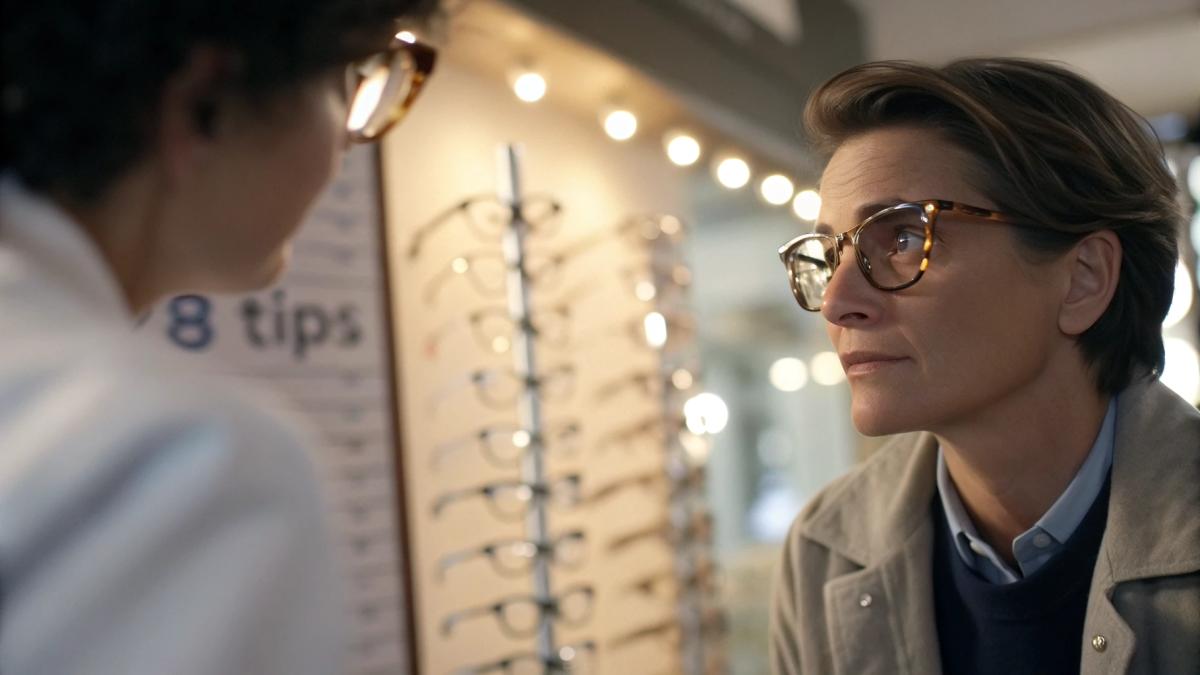Identifying Your Prescription Needs: A Guide to Understanding Your Vision and Selecting the Right Glasses
Are you on the hunt for a new pair of glasses, but feeling a little overwhelmed by all the options out there? Not to worry – before you start browsing frames, it's important to understand your prescription needs so you can select the perfect pair of glasses for your eyesight. Read on for a breakdown of some key terms:
Visual AcuityThis refers to how clearly you can see – it's the "20/20" or other numbers you often hear optometrists mention during eye exams. The higher the number, the better your vision. If you have trouble seeing objects at a distance, you may have difficulty with visual acuity.
MyopiaAlso known as nearsightedness, myopia occurs when light entering the eye is focused in front of the retina, rather than directly on the retina. This can make distant objects appear blurry.
HyperopiaAlso called farsightedness, hyperopia is when light entering the eye is focused behind the retina, making nearby objects appear blurry.
AstigmatismThis is a condition where the cornea (the clear front part of your eye) is misshapen, leading to blurred or distorted vision at all distances.
Once you understand your vision needs, you'll want to select glasses that are tailored to your prescription. This may mean choosing lenses that are designed to correct specific issues, such as high index lenses for strong prescriptions or progressive lenses for those who need assistance with both near and far vision.
Of course, selecting glasses isn't just about functionality – you'll also want to find a pair that complements your style, face shape, and personal taste. With the right guidance, it's easy to find a pair that checks all of the boxes.
Finding Your Perfect Fit: Tips for Selecting Frames Based on Face Shape and Comfort
When it comes to picking the perfect glasses, there are several factors to consider. Style, color, and material are all important, but the two most vital aspects to take into account are your face shape and comfort.
Face ShapeOne of the first things you should consider when selecting glasses is your face shape. Different face shapes look best with certain frame shapes, as this will help balance and complement your facial features.
- Round Face: If you have a round face, you'll want to look for frames that are angular and have more defined lines. Square, rectangle, and geometric shapes all work well for round faces.
- Square Face: To soften the angles of a square face, choose frames with oval or round shapes. Cat-eye glasses are also a great option for square faces.
- Heart-Shaped Face: Frames that are wider at the top and narrower at the bottom, like aviators or butterfly glasses, work well for heart-shaped faces. Avoid glasses with heavy detailing on the top.
- Oval Face: Oval faces can wear virtually any style of glasses, making it the perfect face shape to experiment with different styles.
ComfortAnother essential factor in choosing glasses is comfort. Glasses that are uncomfortable can lead to headaches, nose and ear pain, and constant adjustment. Here are some tips to ensure your glasses are comfortable:
- Frame Size: When you try on glasses, make sure the frame is neither too large nor too small for your face. The glasses should rest comfortably on your nose without being too tight or sliding down.
- Bridge Fit: The bridge of the glasses is the part that rests on your nose. It's essential to find a frame that fits your bridge comfortably to prevent slipping and redness.
- Weight: The weight of the glasses can also affect comfort. Heavier frames may cause discomfort, while lighter frames may not provide enough support. Try on different frame materials, such as metal, plastic, or titanium, to see which feels best.
In conclusion, finding the perfect glasses involves considering both your face shape and comfort. By keeping these two factors in mind, you'll be able to choose glasses that not only look good but also feel good.
Style and Functionality: Balancing Aesthetics with Practicality in Choosing the Right Pair of Glasses
Choosing the right pair of glasses can be a daunting task, especially when you consider the vast array of styles, frame materials, and lens options. With so many options to choose from, achieving a balance between style and functionality is crucial.
Consider the shape of your face
When choosing glasses, it is essential to understand the shape of your face. Certain styles of glasses suit specific face shapes better than others. For example, those with a round face should avoid round frames and opt for angular frames instead. Square or rectangular frames help elongate the face and create a more defined jawline. If you have an oval face, you're lucky! Oval faces go well with almost any frame shape.
Frame materials
Frame materials play a crucial role in the longevity and durability of your glasses. Generally, glasses are made of plastic, metal, or a combination of both. Plastic frames are lighter and come in many fun colors and interesting designs. Metal frames offer a sleek and minimalist look and come in a wide range of colors and finishes. When choosing the material for your frames, it is essential to consider your lifestyle. If you're into sports, you may need more durable frames than someone who sits behind a desk all day.
Lenses
When choosing glasses, the lenses' quality is as important as the frame material. Your lifestyle and visual needs will determine the type of lenses you need. Single vision lenses are the most common and are often used to correct nearsightedness or farsightedness. If you have astigmatism, you may require toric lenses specifically made to correct this eye condition. Progressive lenses are perfect for those who need multiple vision corrections, transitioning smoothly from distance to reading or computer work.
Conclusion
Choosing the right pair of glasses involves finding a balance between style and practicality. Understanding the shape of your face, considering the frame material, and knowing which lenses are best suited for your visual needs all play a crucial role in selecting the perfect pair of glasses.



